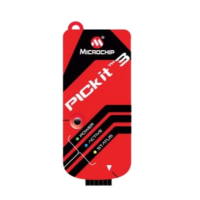Overview
2012 Microchip Technology Inc. DS41628B-page 15
1.6 SOFTWARE OVERVIEW
This guide will assume that the reader has a basic knowledge of electronics. The
reader does not need to have any programming experience with a PIC MCU before
reading, although a basic knowledge of programming and what the difference between
a bit and byte will help.
The software is written in both assembly and ‘C’ in the MPLAB X and MPLAB 8 inte-
grated design environment (IDE). The assembly version is more complex and requires
more lines of code, however it is closely tied to the PIC device’s hardware and the
reader will gain a much better understanding by doing these lessons in parallel with the
‘C’ routines. The ‘C’ programming language is a higher level language assembly, hence
it provides the reader with an easier to read flow of the program. Each lesson has both
versions and are functionally equivalent.
It is recommended that the lessons be followed sequentially, as presented, since most
of the lessons build up on one another. Each new program will introduce a new periph-
eral or concept. This guide is not intended to be read without following along in the
code.
The PIC18 and enhanced PIC16 programs will be presented side-by-side and their
differences and similarities explained.
1.7 RUNNING THE DEMONSTRATIONS
The board comes preprogrammed with a lesson. To use this program, either apply 5V
to the power header (P2), or connect a programmer to the programmer header (P1)
and apply 5V through the programmer in the IDE. The demo program will blink the four
red LEDs in succession. Press the push button (SW1), and the sequence will reverse.
Rotate the potentiometer (RP1), and the light sequence will blink at a different rate. This
demo program is developed through the first seven lessons in this guide.

